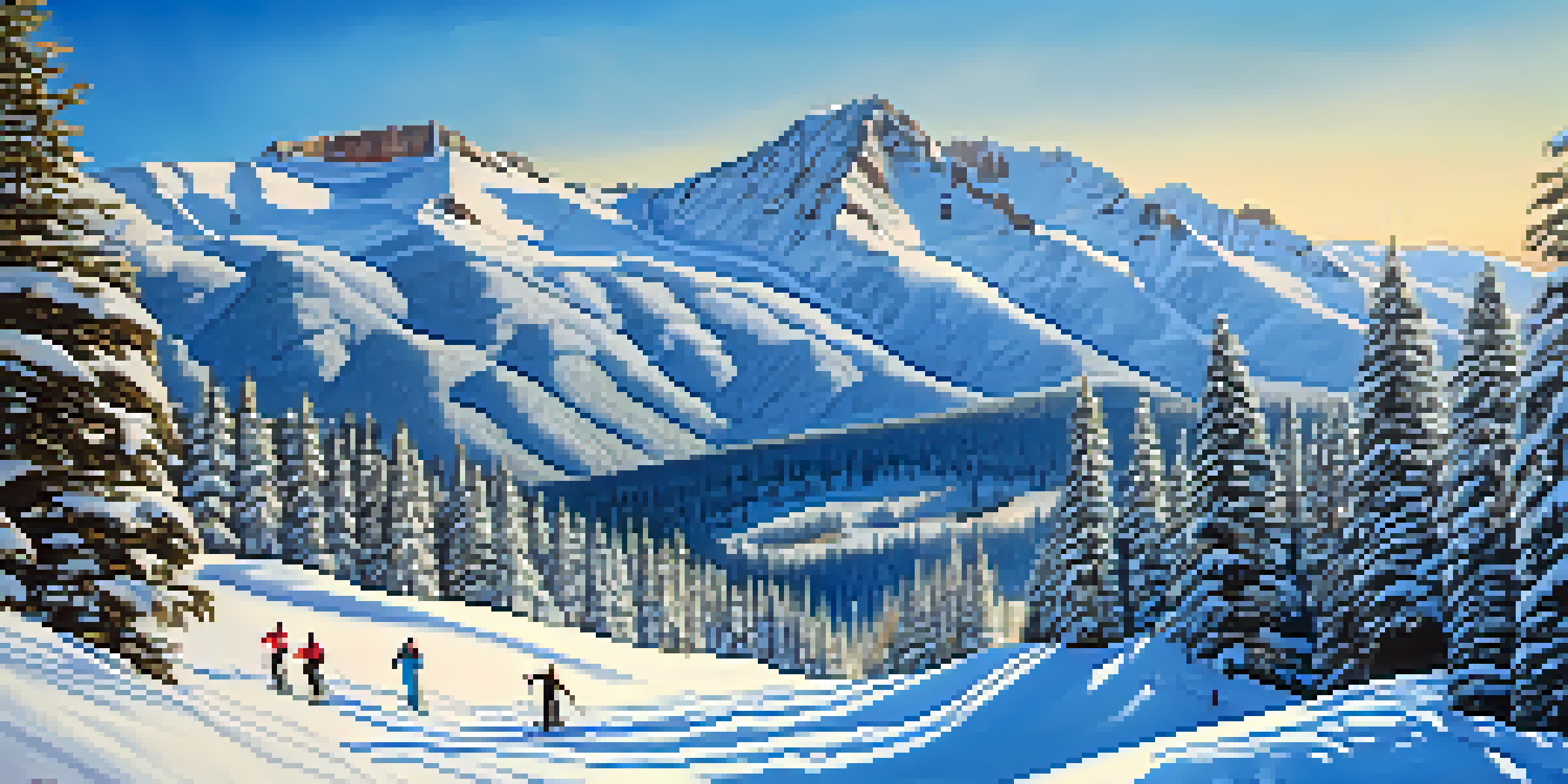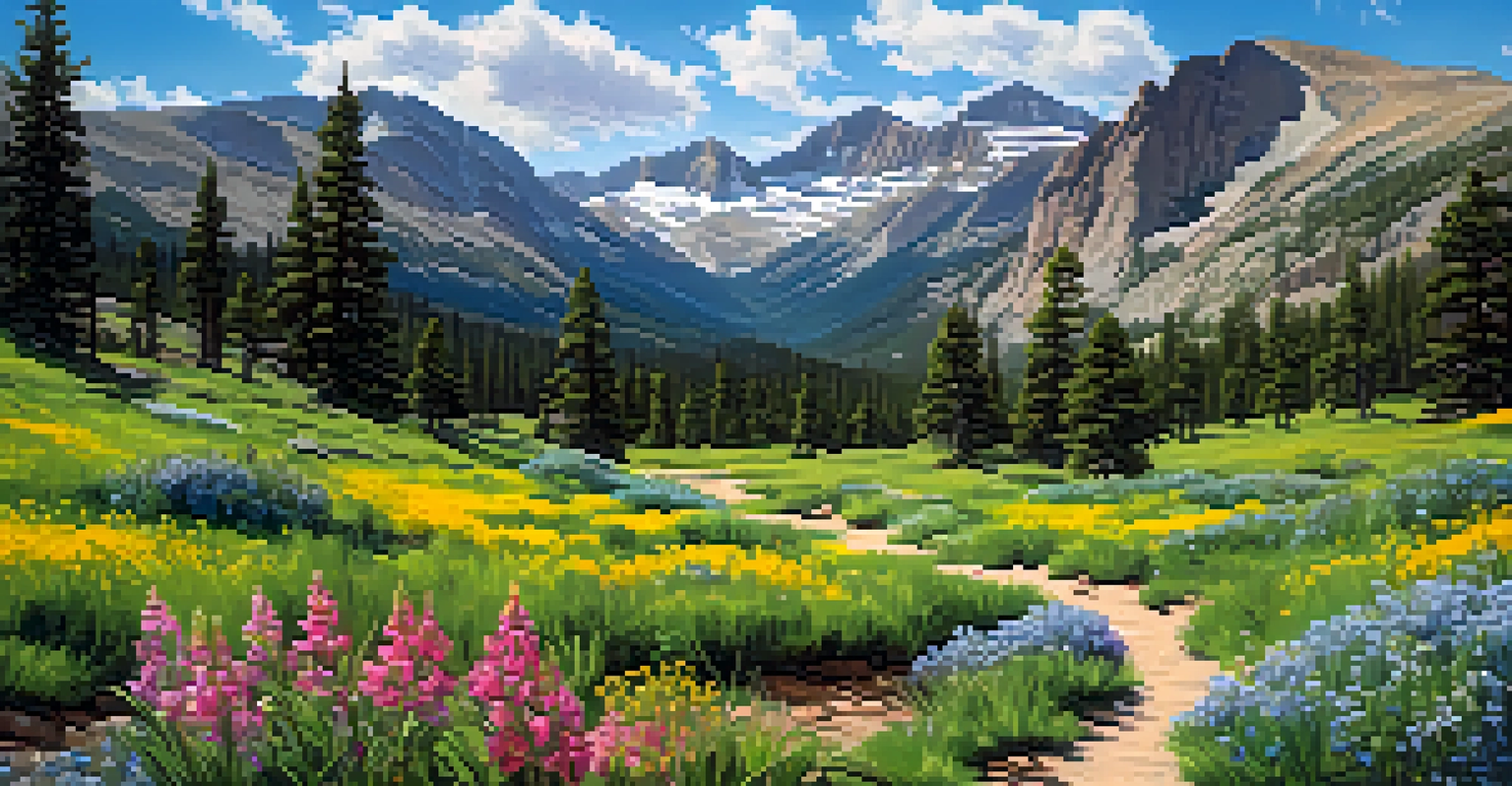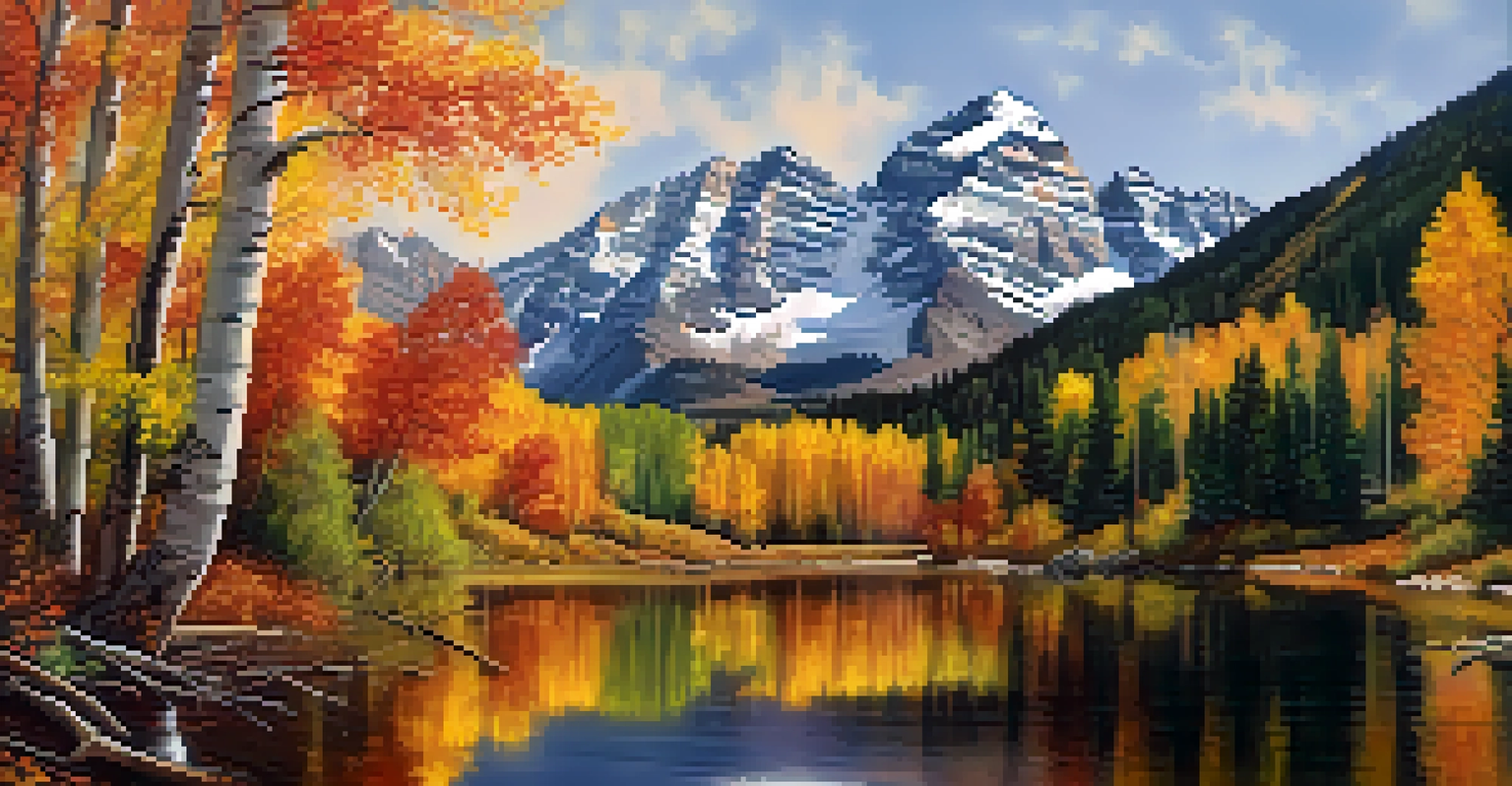Tourism Trends in Colorado Driven by Seasonal Weather Changes

Understanding Colorado's Unique Climate and Geography
Colorado's diverse landscape—from the Rocky Mountains to high plains—creates a unique climate that varies significantly with the seasons. With more than 300 days of sunshine a year, the state attracts tourists year-round. However, the weather patterns can shift dramatically, influencing the types of activities available at different times of the year.
In every walk with nature, one receives far more than he seeks.
For instance, winter draws visitors to ski resorts like Aspen and Vail, while summer invites hikers and campers to explore the vast national parks. The changing weather not only affects outdoor activities but also impacts local businesses that cater to tourists' seasonal needs. Understanding these climatic variations is key to grasping Colorado's tourism trends.
As a result, the state’s tourism board keeps a close eye on weather forecasts to tailor marketing strategies and promotional efforts. This proactive approach ensures that tourists are informed about the best times to visit based on their desired activities.
Winter Wonderland: Skiing and Snow Activities
When winter blankets Colorado in snow, the tourism scene transforms into a bustling hub of skiing and snowboarding enthusiasts. Resorts in areas like Breckenridge and Steamboat Springs become hotspots for both locals and tourists eager to hit the slopes. The allure of powdery snow and picturesque mountain views draws visitors looking for adventure and relaxation alike.

In addition to skiing, winter festivals and activities like snowshoeing and ice skating emerge, providing diverse options for those less inclined to ski. Events such as the Winter Park Snowball Festival attract families and friends, fostering a sense of community and fun. This seasonal focus on winter sports significantly boosts local economies and supports seasonal employment.
Seasonal Activities Drive Tourism
Colorado's distinct seasons create unique tourism opportunities, with winter sports, summer adventures, and fall festivals attracting visitors year-round.
Moreover, the winter months have seen a rise in wellness tourism, with many seeking rejuvenation in mountain spas after a long day on the slopes. This trend highlights how seasonal weather can shape not just activities but also the broader tourism landscape in Colorado.
Spring Bloom: Hiking and Wildlife Watching
As the snow melts and flowers begin to bloom, Colorado’s spring season invites outdoor enthusiasts to explore its extensive trails and parks. This time of year marks the transition from winter sports to hiking, with trails like the Flatirons in Boulder becoming increasingly popular. The vibrant scenery and moderate temperatures create an ideal environment for both seasoned hikers and beginners.
The earth has music for those who listen.
Wildlife watching also peaks in spring, as animals emerge from hibernation and migratory birds return. Parks such as Rocky Mountain National Park provide visitors with the chance to witness this seasonal awakening firsthand, making it a favorite for nature lovers. Guided tours and educational programs help to enhance the experience, offering insights into the local ecosystem.
Additionally, spring festivals celebrating local flora and fauna enrich the tourism experience. Events like the Denver Botanic Gardens' Spring Blooms attract those looking to appreciate Colorado's natural beauty, showcasing how seasonal changes can enhance cultural tourism.
Summer Adventures: Festivals and Outdoor Activities
Summer in Colorado is synonymous with adventure and vibrant festivals. As the weather warms, activities such as rafting, mountain biking, and camping become the main attractions, drawing thrill-seekers from all over. The state's extensive network of rivers and trails offers endless opportunities to connect with nature and challenge oneself physically.
Festivals celebrating everything from music to craft beer pop up across the state, showcasing Colorado's rich culture and community spirit. Events like the Telluride Bluegrass Festival and the Great American Beer Festival not only attract tourists but also foster local pride and economic growth. These gatherings serve as a reminder of how summer weather can enhance tourism through community engagement.
Weather Influences Adventure Sports
The state's varied weather patterns significantly impact adventure sports, requiring tourists to stay informed about conditions for safety and enjoyment.
Moreover, the summer months see an influx of families vacationing in Colorado, with many opting for road trips to explore the scenic byways. The allure of picturesque landscapes and family-friendly activities solidifies summer as a peak season for tourism, highlighting the connection between weather and travel trends.
Autumn Colors: Leaf Peeping and Harvest Festivals
As the leaves change color and the air turns crisp, autumn in Colorado offers a breathtaking display of nature's artistry. This seasonal transformation attracts 'leaf peepers' who flock to the mountains and parks to witness the vibrant fall foliage. Popular spots like Kebler Pass and the Maroon Bells become must-visit destinations for photographers and nature enthusiasts.
Additionally, autumn heralds the arrival of harvest festivals celebrating local produce and crafts. Events such as the Colorado Pumpkin Patch Festival and the Palisade Peach Festival draw visitors eager to indulge in seasonal treats and support local farmers. These festivals provide a sense of community and showcase Colorado's agricultural heritage.
The combination of stunning landscapes and community events makes fall a unique time for tourism in Colorado. As the weather cools, visitors can enjoy outdoor activities while savoring the seasonal flavors that accompany the harvest time.
The Impact of Weather on Adventure Sports Tourism
Colorado is renowned for its adventure sports, and seasonal weather plays a crucial role in shaping these offerings. From skiing in winter to kayaking in summer, each season brings its own set of challenges and thrills. Weather conditions can drastically influence the safety and accessibility of these activities, making it essential for tourists to be informed.
For instance, the summer monsoon season can create rapid changes in river conditions, affecting white-water rafting experiences. Similarly, winter storms can impact ski conditions, making it vital for enthusiasts to stay updated on local forecasts. This dynamic nature of adventure sports highlights the importance of weather awareness for both tourists and operators.
Sustainability in Tourism Practices
As climate change affects Colorado's environment, the tourism industry is shifting towards sustainable practices to preserve its natural beauty and support local communities.
As a response, many adventure tourism companies in Colorado have integrated real-time weather tracking into their services. This not only helps in planning safe excursions but also enhances the overall experience for visitors, underscoring how closely intertwined weather and adventure sports tourism truly are.
Sustainable Tourism: Adapting to Climate Change
With climate change becoming an increasingly pressing issue, Colorado's tourism industry is adapting to ensure sustainability. Seasonal weather shifts can affect everything from snowpack levels to wildfire risks, prompting a reevaluation of tourism practices. The state is committed to preserving its natural beauty while promoting responsible travel.
Initiatives aimed at sustainable tourism focus on minimizing environmental impact and supporting local communities. For example, eco-friendly accommodations and responsible outdoor practices are being encouraged to help protect the state's delicate ecosystems. Tourists are also being educated on Leave No Trace principles, fostering a culture of respect for nature.

By promoting sustainable practices, Colorado aims to attract a demographic of environmentally-conscious travelers. This shift not only benefits the environment but also bolsters the local economy, ensuring that the state remains a premier destination for years to come, regardless of weather changes.
The Future of Colorado Tourism in a Changing Climate
As we look ahead, the future of Colorado's tourism industry will inevitably be influenced by ongoing climate changes. With shifting weather patterns, it's essential for tourism stakeholders to adapt their strategies to meet new demands. This adaptability will ensure that Colorado continues to thrive as a travel destination.
Emerging trends such as the rise of year-round tourism and the growing interest in sustainable travel options may reshape how visitors experience Colorado. Tourists are increasingly seeking unique experiences that allow them to connect with the environment, emphasizing the importance of adaptability in tourism offerings.
Ultimately, Colorado's resilience and commitment to preserving its natural resources will play a critical role in navigating these changes. By embracing innovation and sustainability, the state can continue to welcome tourists while maintaining the charm and beauty that make it a beloved destination.